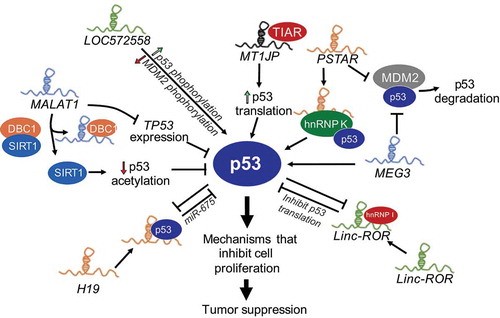Figures & data
Table 1. LncRNAs that interface with p53-pathway.


